Choosing a garden sprayer for treating trees
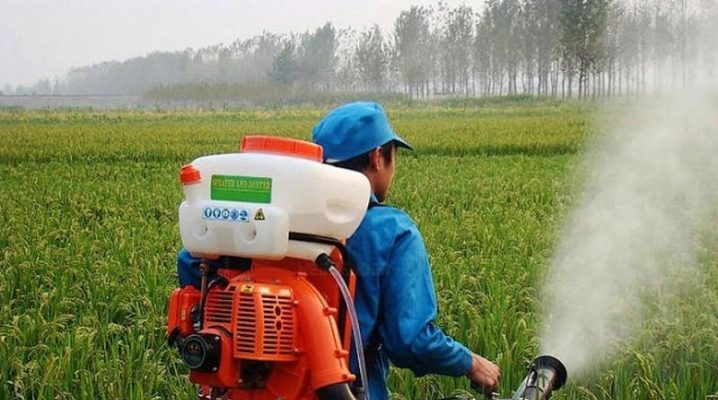
A garden sprayer for treating trees and shrubs is an important agricultural tool. The general condition of the garden and its yield depend on its competent choice and use.
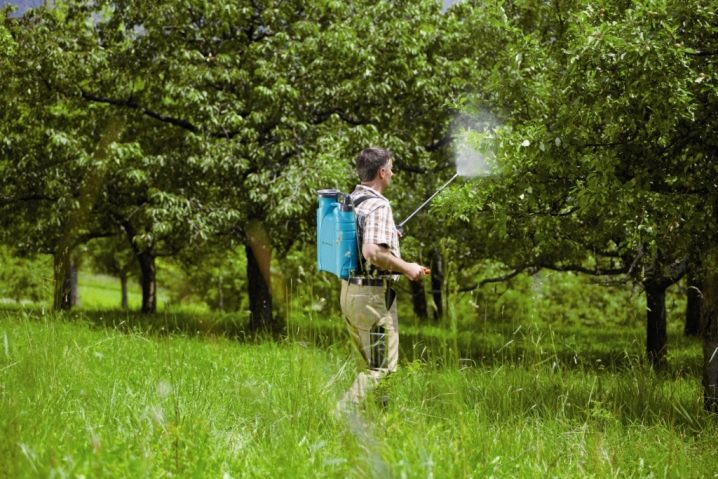
Purpose of devices
The main tasks of the tree spraying device are effective pest control, treatment and prevention of fungal and bacterial diseases, which often affect fruit plants. Sometimes it happens that you need to spray a small berry bush or a young apple tree growing alone on the site. In this case, you can get by with an ordinary room spray. However, if it is necessary to process tall trees or large gardens, it is no longer possible to do without the help of special equipment.
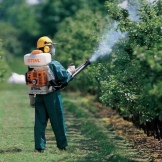
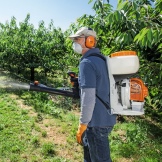
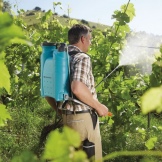
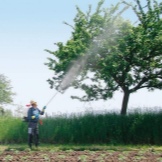
Garden sprayers are devices designed for fine dispersion of a wide variety of solutions. The spraying process becomes possible due to the creation of increased pressure inside the working container. With the help of such units, the upper parts of the trees, hard-to-reach areas of the garden are processed.
Varieties
The modern market for garden and professional sprayers presents several types of devices, which are classified according to a number of criteria. The first criterion for distinguishing is the volume of the working tank. For household appliances, it varies from 2 to 80 liters, and for professional it can reach several hundred liters. Models with a tank volume of up to 3 liters are used when processing greenhouse plants or young bushes, and more spacious devices are used for spraying mature trees in home gardens and in small fruit and berry nurseries. For processing plants on a large scale, they no longer use household appliances, but expensive professional equipment.
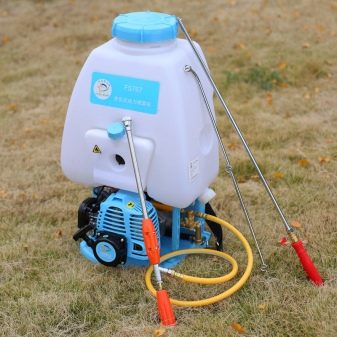

The second feature of the device classification is the degree of mobility. A distinction is made between knapsack and wheeled vehicles. The first ones are equipped with a less capacious tank, but they allow processing in hard-to-reach places, climbing a tree trunk or a ladder. Wheeled instruments are equipped with a spacious tank. Although they are less maneuverable and somewhat cumbersome, they are able to operate for a long time without refueling, thereby eliminating the need to carry a heavy tank. The main feature by which garden sprayers are subdivided is the type of construction. According to this criterion, pump-action, gasoline and battery models are distinguished. Let's consider them in more detail.

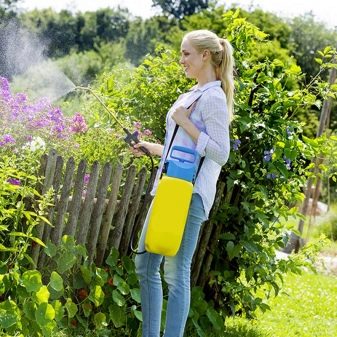
Pump
The design of the pump units is very simple. The device consists of a plastic or aluminum container with a built-in mechanical piston pump. There is an outlet on the tank with a flexible hose coming out of it, which, in turn, is connected to a spray rod-fishing rod. There is a "start" button on the handle of the fishing rod, and its end is equipped with an adjustable nozzle that can change the intensity of spraying and is called a "torch".
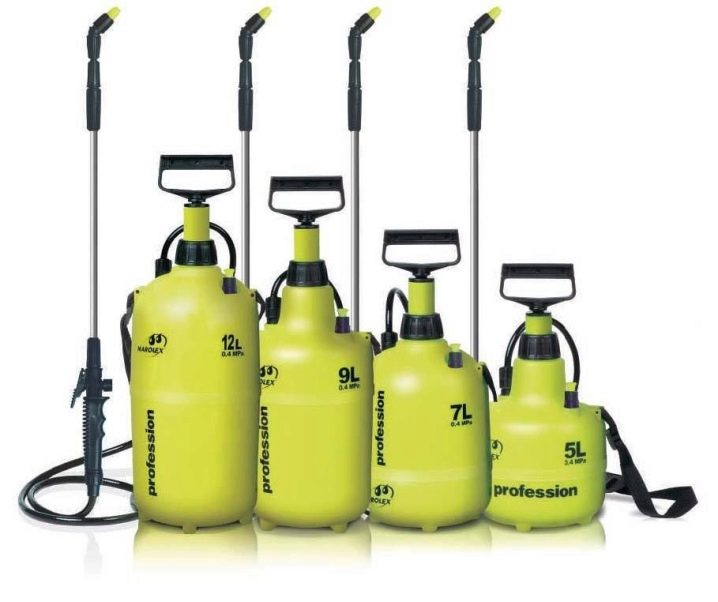
The principle of operation of the pump spray is quite simple: due to manual injection of air, excess pressure is created inside the tank, which pushes the solution out of it. The expelled liquid enters through the hose into the fishing rod, from there - into the spray nozzle, and already from it, in a finely dispersed state, comes out.The average pressure in the container is 5 atmospheres. At one pumping, the device can work for about half an hour.

The tank capacity of pump models is small. It varies from 1.5 to 20 liters. The devices are available in portable and knapsack design, intended for processing a few berry bushes or low fruit trees. Apparatuses with a portable tank are often equipped with trolleys, which greatly simplifies their use. The products are equipped with a long telescopic bar with which the tops of tall trees are processed. In general, the effectiveness of pump sprayers is limited to 30 acres, and therefore, for a larger garden, it is worth choosing a more powerful model.
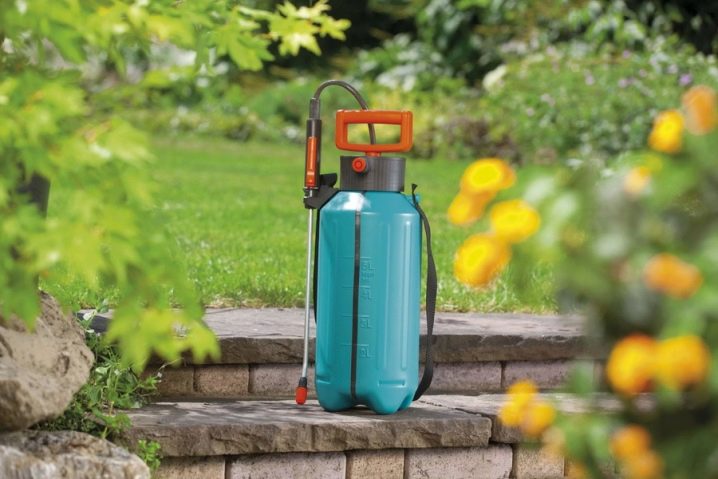
The simplest pump sprayer can be made by hand. To do this, a flask is fixed on a garden cart and a submersible pump with a lower intake of liquid is placed in it. Then the pump cable together with the pressure hose is led out through the cover, after which this hose is connected with an adapter to a flexible armored hose with a length of 6 to 8 m.After that, an assembly rod is made of aluminum pipes, connected to a flexible hose and equipped with a nozzle. Float-type devices are used to control the solution level in the tank.
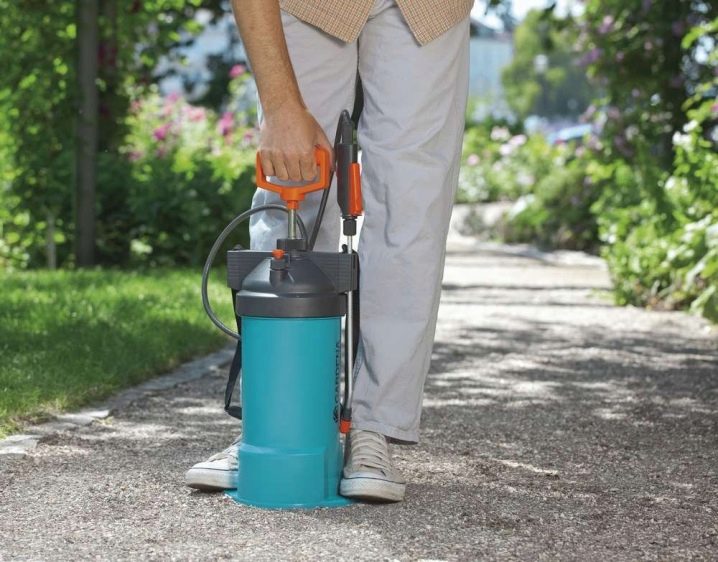
Rechargeable
Models of this type are capable of functioning without manual pumping. The pump runs on battery power, which greatly facilitates the processing of large-scale areas. The devices are often equipped with a telescopic extension bar. Just like the pump-action ones, they are available in knapsack and portable versions. Portable models are equipped with a trolley and a larger tank. This allows you to process up to 50 acres of fruit and berry plantings on one battery charge without additional refueling.
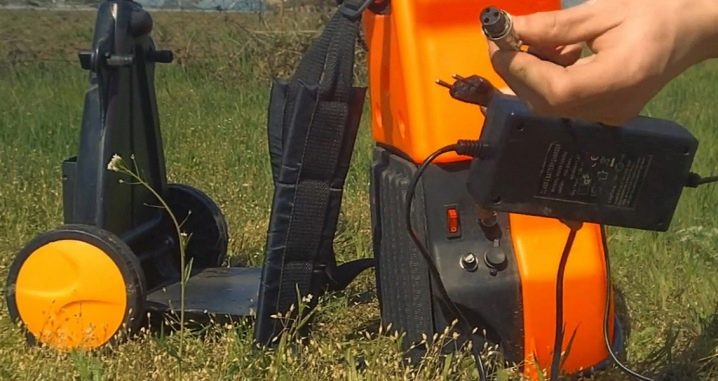
Gasoline
Such devices are designed for processing large areas and are called motor sprayers. The traditional fishing rod in them is replaced by a pipe equipped with a large nozzle, which increases the spraying range up to 7 meters in height and 15 meters in length. Gasoline units are equipped with 5 hp engines. with., which allows them to be used when blowing off fallen leaves or freshly fallen snow. In addition, such models are often used as a puller for whitewashing the lower part of the trunks of fruit trees. The performance of the gasoline compressor is quite high. It can be used to cultivate large gardens with an area of over 1 hectare.
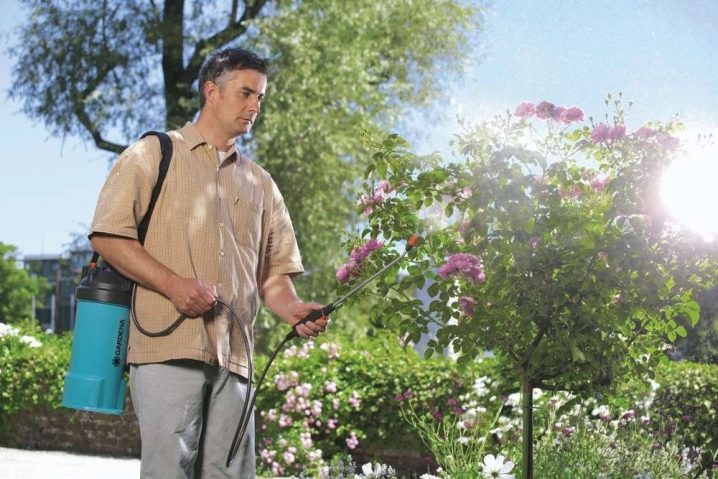
Gasoline sprayers are produced in the form of self-propelled and non-self-propelled wheeled devices, they can have both a four-stroke and a two-stroke engine. Gasoline is used as fuel for the first engine, while the second type is capable of running on a gasoline-oil mixture. Models of this type require annual maintenance, which includes replacing spark plugs, fuel and air filters, as well as cleaning the tanks, regularly checking the condition of the mufflers and the oil level.
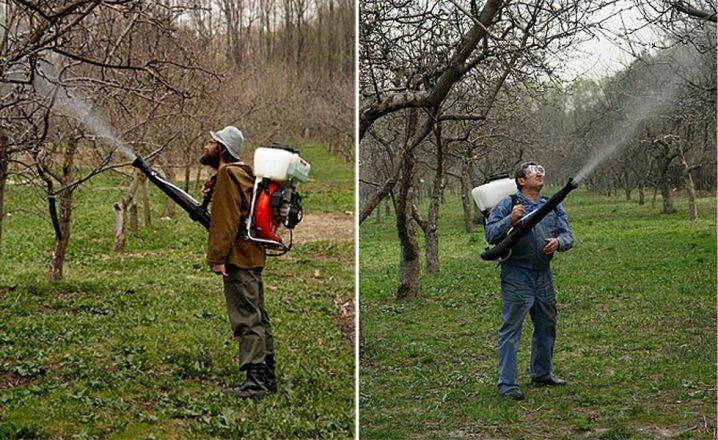
Features of the operation of the units
When working with any of the sprayers, personal safety measures must be observed. The respiratory organs must be protected with a gauze bandage, and the open skin of the hands must be covered with rubber gloves. It is also advisable to protect the eyes with glasses. At the end of the treatment, it is necessary to thoroughly rinse the flexible hose and remove the remaining liquid. With subsequent use, the ready-made solution must be drained, using a paper or fabric filter. This will help to avoid clogging of the nozzle and prolong the life of the spray device.

For information on how to use a garden sprayer to treat trees, see the following video.



































































The comment was sent successfully.